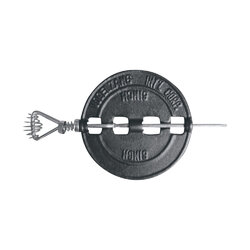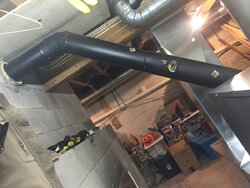brenndatomu
Minister of Fire
Sounds like the fan/limit switch was set about right from the factory. If the firebox and heat exchanger are getting gunked up then you either need to set the fan temp back up or you have wet wood, or maybe some of both. If it was actually dripping then I'd lean toward wet wood and maybe you have the air cut back too far also. If it is too hot then load less wood. Less quantity per load and then less often if it is still too hot. You may have to let your house temp fluctuate a bit so that you can get the furnace hot on each load, can't run 'em on "low" all the time. It has been pretty warm, it can be hard to run a wood furnace properly in this kind of weather.
I wouldn't want the blower running all the time, but it will run much more than a fossil fuel furnace.
As far as getting heat to the far rooms, you will have to damper the close rooms back until you get the balance that you want. It may require bumping the blower speed up, but then that means you will have to screw with all your settings again (temp switch and duct dampers)
I wouldn't want the blower running all the time, but it will run much more than a fossil fuel furnace.
As far as getting heat to the far rooms, you will have to damper the close rooms back until you get the balance that you want. It may require bumping the blower speed up, but then that means you will have to screw with all your settings again (temp switch and duct dampers)



